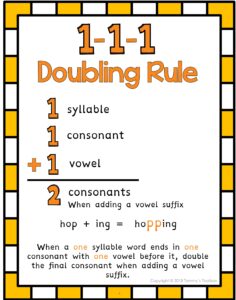What Are the 6 Basic Phonics Rules? A Complete Guide for Teachers and Parents
Jul 7
Introduction
Phonics is the foundation of reading and writing, helping children decode words by connecting sounds to letters. Understanding basic phonics rules empowers young learners to read fluently and spell accurately. Whether you're a teacher, homeschooling parent, or tutor, mastering these six essential phonics rules will give you the tools to support early literacy development effectively.
In this comprehensive 2000-word guide, you’ll learn:
✅ The 6 fundamental phonics rules every beginner should know
✅ Clear examples to explain each rule
✅ Common exceptions to watch for
✅ Engaging activities to reinforce learning
✅ Tips for teaching phonics effectively
According to the Ohio Department of Education & Workface, Phonics shall be used as a technique in the teaching of reading in grades kindergarten through three.
Let’s dive into these essential reading-building blocks!
Phonics is the foundation of reading and writing, helping children decode words by connecting sounds to letters. Understanding basic phonics rules empowers young learners to read fluently and spell accurately. Whether you're a teacher, homeschooling parent, or tutor, mastering these six essential phonics rules will give you the tools to support early literacy development effectively.
In this comprehensive 2000-word guide, you’ll learn:
✅ The 6 fundamental phonics rules every beginner should know
✅ Clear examples to explain each rule
✅ Common exceptions to watch for
✅ Engaging activities to reinforce learning
✅ Tips for teaching phonics effectively
According to the Ohio Department of Education & Workface, Phonics shall be used as a technique in the teaching of reading in grades kindergarten through three.
Let’s dive into these essential reading-building blocks!
1. The Rule of Silent ‘E’ (Magic ‘E’)
What it is: A silent ‘e’ at the end of a word makes the preceding vowel say its long sound (the vowel "says its name").
Examples:
- cap → cape (short *a* becomes long *a*)
- kit → kite (short *i* becomes long *i*)
- hop → hope (short *o* becomes long *o*)
Exceptions:
- Some words don’t follow this rule (give, have, love)
- .In words like "edge," the ‘e’ is silent but doesn’t change the vowel sound.
Teaching Tip:
Use the "Magic E Wand" (a popsicle stick with an ‘e’) to physically add the silent ‘e’ to CVC (consonant-vowel-consonant) words, transforming them (e.g., "pin" → "pine").
Examples:
- cap → cape (short *a* becomes long *a*)
- kit → kite (short *i* becomes long *i*)
- hop → hope (short *o* becomes long *o*)
Exceptions:
- Some words don’t follow this rule (give, have, love)
- .In words like "edge," the ‘e’ is silent but doesn’t change the vowel sound.
Teaching Tip:
Use the "Magic E Wand" (a popsicle stick with an ‘e’) to physically add the silent ‘e’ to CVC (consonant-vowel-consonant) words, transforming them (e.g., "pin" → "pine").
2. The Consonant Digraph Rule
What it is: Two consonants work together to make a single new sound (not a blend of their individual sounds).
Common Digraphs & Sounds:
- sh – /sh/ (ship, fish)
- ch – /ch/ (chip, lunch)th – /
- th/ (this, thin) – (Note: ‘th’ can be voiced or unvoiced.)
- wh – /wh/ (when, whale)ph – /f/ (phone, graph)
Exceptions:
- Sometimes, digraphs split in compound words ("grasshopper" – ‘ss’ and ‘pp’ are separate).
Teaching Tip:
Play "Digraph Hunt"—have students find and highlight digraphs in a short passage or book.
Common Digraphs & Sounds:
- sh – /sh/ (ship, fish)
- ch – /ch/ (chip, lunch)th – /
- th/ (this, thin) – (Note: ‘th’ can be voiced or unvoiced.)
- wh – /wh/ (when, whale)ph – /f/ (phone, graph)
Exceptions:
- Sometimes, digraphs split in compound words ("grasshopper" – ‘ss’ and ‘pp’ are separate).
Teaching Tip:
Play "Digraph Hunt"—have students find and highlight digraphs in a short passage or book.
3. The Vowel Team Rule
What it is: When two vowels appear together, the first vowel usually says its long sound, and the second is silent.
Examples:
- ai – /ā/ (rain, train)
- ea – /ē/ (beach, leaf)
- oa – /ō/ (boat, coat)
- ee – /ē/ (feet, tree)
Exceptions:
- Some vowel teams make unexpected sounds ("bread" – ‘ea’ says /e/).
- Others make a diphthong (a blended sound, like ‘oi’ in "coin").
Teaching Tip:
Use vowel team flashcards and have students sort them by sound.
Examples:
- ai – /ā/ (rain, train)
- ea – /ē/ (beach, leaf)
- oa – /ō/ (boat, coat)
- ee – /ē/ (feet, tree)
Exceptions:
- Some vowel teams make unexpected sounds ("bread" – ‘ea’ says /e/).
- Others make a diphthong (a blended sound, like ‘oi’ in "coin").
Teaching Tip:
Use vowel team flashcards and have students sort them by sound.
4. The ‘R’-Controlled Vowel Rule (Bossy R)
What it is: When a vowel is followed by an ‘r’, the vowel sound changes.
Common R-Controlled Vowels:
- ar – /ar/ (car, star)er – /
- er/ (her, fern)ir – /
- ir/ (bird, stir)
- or – /or/ (fork, corn)
-ur – /ur/ (fur, turn)
Exceptions:
- Some words don’t follow the pattern ("mirror" – the ‘ir’ sounds like /er/).
Teaching Tip:
Sing "The Bossy R Song" (e.g., "A-R says /ar/, E-R says /er/...") to reinforce the sounds.
Common R-Controlled Vowels:
- ar – /ar/ (car, star)er – /
- er/ (her, fern)ir – /
- ir/ (bird, stir)
- or – /or/ (fork, corn)
-ur – /ur/ (fur, turn)
Exceptions:
- Some words don’t follow the pattern ("mirror" – the ‘ir’ sounds like /er/).
Teaching Tip:
Sing "The Bossy R Song" (e.g., "A-R says /ar/, E-R says /er/...") to reinforce the sounds.
5. The Doubling Rule (1-1-1 Rule)
What it is: When a one-syllable word has one vowel followed by one consonant, double the final consonant before adding a suffix that starts with a vowel (-ing, -ed, -er).
Examples:
- run → running (double ‘n’)
- big → bigger (double ‘g’)
- sit → sitting (double ‘t’)
Exceptions:
- Words ending in ‘w,’ ‘x,’ or ‘y’ don’t double ("play → playing").
Teaching Tip:
Use the "1-1-1 Rule Checklist" to help students decide when to double letters.
Examples:
- run → running (double ‘n’)
- big → bigger (double ‘g’)
- sit → sitting (double ‘t’)
Exceptions:
- Words ending in ‘w,’ ‘x,’ or ‘y’ don’t double ("play → playing").
Teaching Tip:
Use the "1-1-1 Rule Checklist" to help students decide when to double letters.

6. The Soft ‘C’ and ‘G’ Rule
What it is:
- ‘C’ says /s/ (soft sound) when followed by ‘e,’ ‘i,’ or ‘y.’
- ‘G’ sometimes says /j/ (soft sound) when followed by ‘e,’ ‘i,’ or ‘y.’
Examples:
- Soft ‘C’: cent, city, cycle
- Soft ‘G’: gem, giraffe, gym
Exceptions:
- Some words keep the hard sound ("get," "girl," "give").
Teaching Tip:
Create a "Hard vs. Soft Sort" where students categorize words into two columns.
- ‘C’ says /s/ (soft sound) when followed by ‘e,’ ‘i,’ or ‘y.’
- ‘G’ sometimes says /j/ (soft sound) when followed by ‘e,’ ‘i,’ or ‘y.’
Examples:
- Soft ‘C’: cent, city, cycle
- Soft ‘G’: gem, giraffe, gym
Exceptions:
- Some words keep the hard sound ("get," "girl," "give").
Teaching Tip:
Create a "Hard vs. Soft Sort" where students categorize words into two columns.
Bonus: Common Phonics Exceptions (Sight Words)
While phonics rules cover most words, some high-frequency sight words don’t follow the rules and must be memorized. Examples:
- the, said, was, one, could
Teaching Tip:
Use flashcards and repetition to reinforce sight words alongside phonics rules.
- the, said, was, one, could
Teaching Tip:
Use flashcards and repetition to reinforce sight words alongside phonics rules.
How to Teach Phonics Rules Effectively
1. Use Multi-Sensory Techniques (tracing, singing, movement).
2. Start with One Rule at a Time to avoid confusion.
3. Read Decodable Books that reinforce each rule.
4. Play Phonics Games (Bingo, Memory, Word Hunts).
5. Provide Immediate Feedback to correct mistakes early.
2. Start with One Rule at a Time to avoid confusion.
3. Read Decodable Books that reinforce each rule.
4. Play Phonics Games (Bingo, Memory, Word Hunts).
5. Provide Immediate Feedback to correct mistakes early.
Final Thoughts
Mastering these six basic phonics rules gives young readers the tools to decode thousands of words independently. While exceptions exist, a strong phonics foundation makes reading and spelling much easier.
Key Takeaways:
✔ Silent ‘E’ makes the vowel long.
✔ Digraphs create new sounds.
✔ Vowel teams often make the first vowel long.
✔ Bossy ‘R’ changes vowel sounds.
✔ Doubling rule applies to short vowel words.
✔ Soft ‘C’ and ‘G’ appear before ‘e,’ ‘i,’ or ‘y.'
By incorporating these rules into lessons with fun activities, you’ll help students become confident, skilled readers!
Key Takeaways:
✔ Silent ‘E’ makes the vowel long.
✔ Digraphs create new sounds.
✔ Vowel teams often make the first vowel long.
✔ Bossy ‘R’ changes vowel sounds.
✔ Doubling rule applies to short vowel words.
✔ Soft ‘C’ and ‘G’ appear before ‘e,’ ‘i,’ or ‘y.'
By incorporating these rules into lessons with fun activities, you’ll help students become confident, skilled readers!
FAQs About Phonics Rules
Q: What age should children learn phonics rules?
A: Most start between ages 4-6, but adjust based on readiness.
Q: How do I know if a word is an exception?
A: Teach common sight words separately and point out irregularities.
Q: Can phonics rules help with spelling?
A: Yes! Understanding sound-letter patterns improves spelling accuracy.
Q: What if a child struggles with phonics?
A: Try multi-sensory methods (sand writing, songs) and extra practice.
A: Most start between ages 4-6, but adjust based on readiness.
Q: How do I know if a word is an exception?
A: Teach common sight words separately and point out irregularities.
Q: Can phonics rules help with spelling?
A: Yes! Understanding sound-letter patterns improves spelling accuracy.
Q: What if a child struggles with phonics?
A: Try multi-sensory methods (sand writing, songs) and extra practice.

372 West Lucille Lane, Schenectady, New York 12306
Phone number: 838-269-9430
Phone number: 838-269-9430
Copyright © 2025
Write your awesome label here.
Write your awesome label here.

